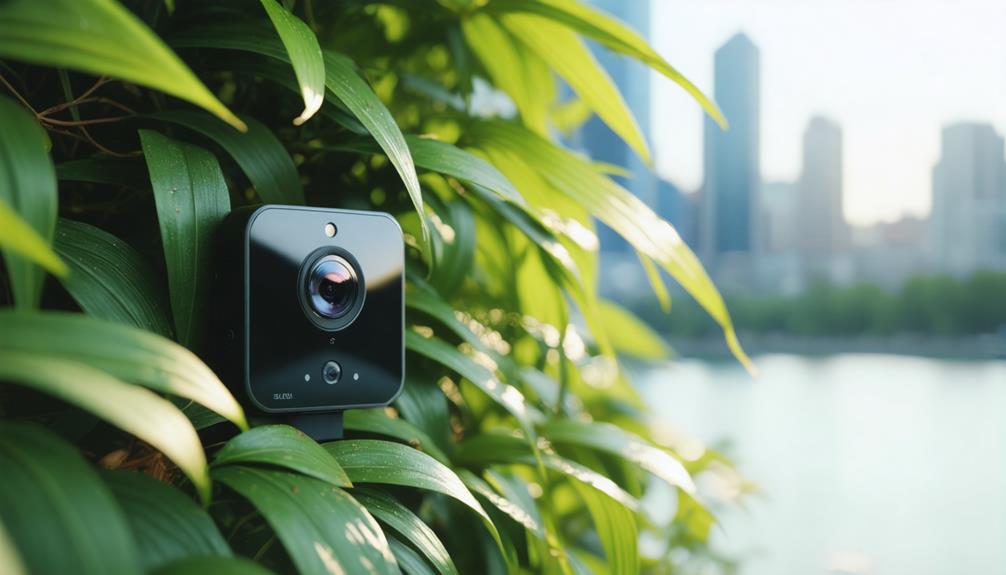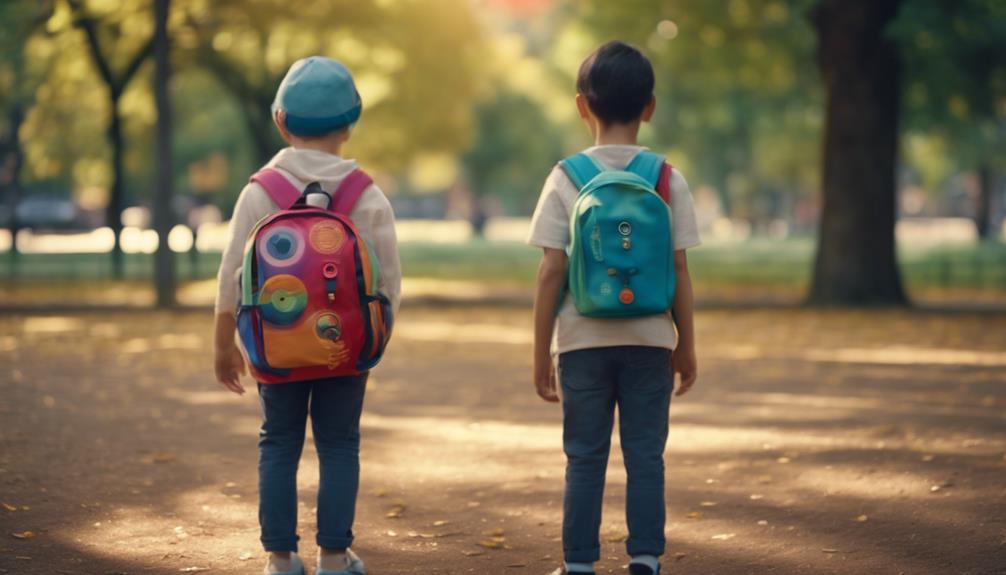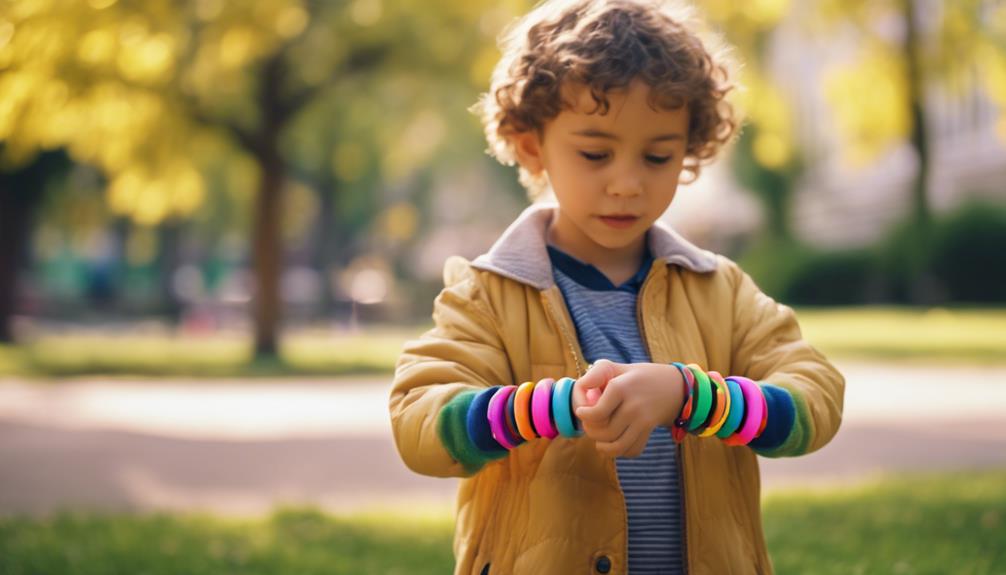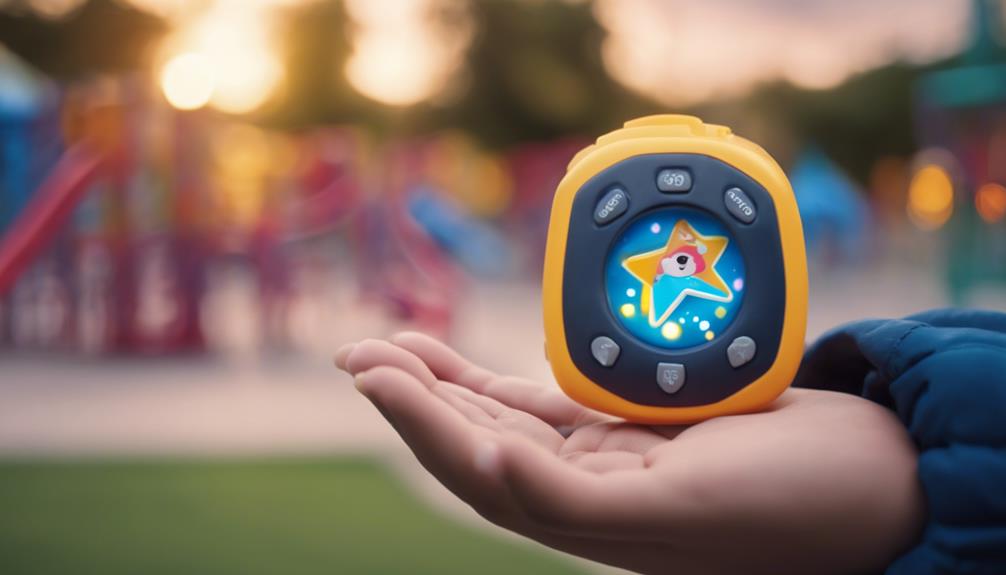
Brainstorm Security Shop

For Orders Over $199

On Any Of Our Products

Details On Refund Page
You’ve likely considered various ways to enhance your child’s safety, but have you explored the benefits of personal alarms? These devices, designed to be both user-friendly and effective, can be a critical tool in your child’s safety arsenal. From keychains to smartwatch applications, the options are diverse, each offering unique features like GPS tracking that keep you informed of your child’s whereabouts. However, choosing the right model involves more than just picking the loudest alarm. It’s about finding a balance between functionality and ease of use for your child. Imagine the peace of mind you’d feel, knowing they have that extra layer of protection. But how do you select the best device? Let’s explore what you need to consider.

Personal alarms provide an effective way to enhance your child’s safety by emitting a loud noise when triggered. These devices are compact and designed to be easily carried or attached to your child’s clothing or backpack. You’ll find them equipped with a simple mechanism, usually a pin or a button, which when pulled or pressed, sets off a piercing alarm.
The sound level of these alarms typically ranges between 100 to 140 decibels, similar to the noise level of a rock concert or a jet engine taking off. This high decibel level is crucial as it needs to attract immediate attention and help deter potential threats.
These alarms aren’t just for warding off attackers; they’re also useful in a variety of situations. For instance, if your child gets lost in a crowded place, activating the alarm can help you locate them quickly.
It’s also important to teach your child how to operate the alarm properly. They should know how to trigger it in an emergency but also understand that it’s not a toy. Regular checks to ensure the device is working properly and that the battery doesn’t need replacing are essential to maintaining its effectiveness.
Using personal alarms offers you peace of mind by enhancing your child’s safety in public spaces. When your child carries a personal alarm, they can easily alert those around and potentially deter an abductor or bully. It’s a simple tool, but its loud noise can draw immediate attention to a situation that might otherwise escalate unnoticed.
These alarms aren’t just for preventing extreme scenarios; they’re also useful in everyday safety situations. If your child gets lost in a crowd, activating the alarm can help you locate them quickly. This is especially valuable in busy places like amusement parks, shopping centers, and festivals. You’ll know they’ve a way to signal for help and make themselves heard, even if they’re out of sight.
Moreover, personal alarms can empower your child, giving them a sense of security and independence. They learn to take charge of their safety in a manageable way. This confidence can extend beyond just using the alarm, affecting their general demeanor and the way they handle themselves in public spaces.
Lastly, these devices are generally user-friendly and designed for children to operate without difficulty. This ease of use ensures that your child can effectively use their personal alarm when it matters most.
You’ll find various types of personal alarms designed to suit different preferences and needs. One popular choice is the keychain alarm, which easily attaches to your child’s backpack or clothes. It’s generally activated by pulling a pin or pressing a button, releasing a loud sound that draws attention and deters potential threats.
Another option is the wristband alarm. These are wearable and often preferred for younger children who might misplace separate devices. Wristband alarms can blend in with everyday wear, making them less conspicuous but still effective in emergencies.
There are also pendant-style alarms that hang around the neck. These are similar to keychain alarms in function but are worn differently for comfort and accessibility.
For tech-savvy parents, app-connected alarms provide peace of mind through GPS tracking and the ability to send alerts to a smartphone. These devices require a bit more setup but offer additional layers of security and connectivity.
Choosing the right type depends largely on your child’s age, lifestyle, and your own peace of mind. Consider what’ll work best for maintaining their safety while ensuring they’re comfortable and willing to use the device regularly.
When selecting a personal alarm for your child, consider the device’s volume, ease of use, and durability. The alarm’s volume needs to be loud enough to attract attention in an emergency, typically around 120 decibels.
It should be easy for your child to operate, ideally with a simple activation mechanism like a pull pin or a push button that they can use under stress. Durability is also key. Look for a device that’s water-resistant and robust enough to withstand drops and rough handling by children.
Additionally, consider the battery life and type; a long-lasting, rechargeable battery is ideal to avoid frequent replacements. Check for additional features such as an LED light, which can be useful for your child during low light situations, or a location tracker if you want to monitor your child’s whereabouts.
Some alarms come with pre-recorded messages or allow you to record a personal message, which can be played when activated, offering reassurance to your child and alerting others more effectively.

Considering the right features for a personal alarm is important, and equally so is choosing one that’s appropriate for your child’s age. You’ll need to consider how easy the device is for your child to use without assistance. For toddlers and younger children, simplicity is key. Look for alarms with large, easily accessible buttons that they can press without fumbling. These devices should also be lightweight and small enough for little hands to carry comfortably.
As your child grows, you can opt for alarms that offer a bit more functionality, like GPS tracking or a mobile app that connects the device to a parent’s phone. These features are great for school-aged children who might start walking to school by themselves or participating in after-school activities.
It’s also worth considering the design of the alarm. Younger kids might prefer bright colors and fun shapes, which can make the alarm seem less intimidating and more like a regular part of their belongings.
Older kids, on the other hand, might appreciate a more discreet design that doesn’t draw attention or make them feel self-conscious.
It’s essential to teach your child how to use their personal alarm responsibly and safely.
First, explain what situations warrant the use of the alarm. It’s not a toy, so emphasize that it’s for emergencies only, like if they’re feeling threatened or lost. You’ll need to define what ‘feeling threatened’ means in a way they can understand, depending on their age.
Practice is key. Go through scenarios where they might need to use the alarm, and have them practice activating and deactivating it. This builds their confidence and ensures they can operate it under stress. Make sure they know it’s important not to overuse the alarm, as false alarms can reduce its effectiveness when there’s a real need.
Also, teach them to stay alert. Having an alarm doesn’t mean they can ignore their surroundings. Teach them to always be aware of what’s happening around them and to stay in well-lit, populated areas whenever possible.
Lastly, reassure them. Knowing they’ve a way to alert someone in an emergency can be comforting but make sure they also know they can always talk to you about any fears or concerns. This dual approach of preparation and communication fosters safety and security.

Regular maintenance ensures your child’s personal alarm remains reliable and durable. It’s crucial you check the battery life frequently. Most alarms have a test feature, so use it to ensure the alarm is loud enough to draw attention when needed. If it’s battery-operated, keep spare batteries handy and replace them periodically, even if they haven’t run out, to avoid any failures in emergencies.
You’ll also want to keep the alarm clean and free from dirt and debris, which can affect functionality. A simple wipe with a damp cloth will do—avoid harsh cleaners that might damage the alarm components. If the alarm comes with a case or a cover, make sure it’s always secured properly to protect it from falls or impacts.
Lastly, consider the environment where the alarm is stored. Extreme temperatures can damage the alarm’s electronics. Try to keep it in a moderate and dry place. If your child’s alarm is water-resistant, check the integrity of the seal periodically because wear and tear can reduce its effectiveness against water over time.
When selecting a personal alarm for your child, consider several crucial factors to ensure it meets your specific needs and circumstances. First, you’ll want to check the sound level of the alarm. It should be loud enough to deter an attacker and attract attention, typically around 120 to 130 decibels.
Next, assess the ease of use. Your child should be able to activate the alarm quickly and effortlessly in an emergency, so look for models with simple activation features like pull pins or push buttons.
You’ll also need to think about size and portability. The alarm should be small and lightweight enough for your child to carry around comfortably, whether it’s on a backpack or on their wrist.
Consider the durability of the alarm as well. It needs to withstand rough handling and possibly adverse weather conditions, so opt for water-resistant models with robust construction.
Lastly, explore additional features that some alarms offer, such as GPS tracking or connectivity with your smartphone to alert you when the alarm is activated. These features can provide extra peace of mind, knowing you’re immediately informed in any situation where your child feels threatened.

Now that you’re equipped with the essentials on personal alarms for children, you can make an informed choice. Consider the type, features, and age appropriateness to find the perfect fit for your child’s needs.
Remember, ease of use and durability are key. Teach your child how to use their alarm safely and check it regularly to ensure it’s always ready.
Choosing the right alarm can give you peace of mind and keep your child safer.

Brainstorm Security Shop
1867 Caravan Trail
Ste 105
Jacksonville, FL 32216
Call us toll free: (800) 859-5566